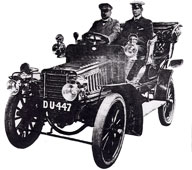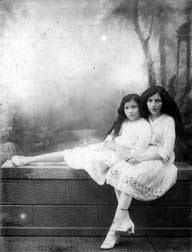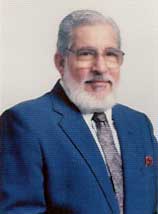|
|
A branch of the Wadias stayed on in Surat and continued to develop the shipping industry and became leaders in the building and construction of bridges, dams and buildings. Between 1840s and 1940s the shipping and building industry in Surat was dominated by Cowasji, Burjorji, Behramji, Rustomji, Hormuzji, Nusserwanji and Pestonji Wadia. Pestonji’s sons Framroze, Firozeshah, and Dhanjishah continued in the building and construction business. Their charities include nursing homes, building free institutions of education and hospitals. While the British ruled India, the French had a couple of small holdings, one on the east coast and the other on the west. In 1929 Khan Saheb Pestonji Wadia bought the west coast region overlooking the Tapti Sea from the French. This included a huge mansion which the family used. Several years later this mansion was donated by the Wadia family for education of women. The Zal F. Wadia College in Surat, was established in memory of young Zal, who passed away at the age of 27. In 1935, Dhanjishah built the first cement concrete road to be built in India, the Prince of Wales Drive in Poona in honor of the visit of Prince Edward VIII of England. (The author is Dhanjishah’s daughter). Seven generations of Wadia master-shipbuilders have constructed ships in Bombay that have plied the seven seas from the shores of the New World to the ancient shores of the China Seas. Many ships were built for the Indian and British Navy. When their connection with the Bombay Dockyard ended in 1913, the Lovji Wadia family had left a legacy of ships, from sloops to schooners, merchant ships and man-o-wars, cutters and clippers, frigates, water boats and steamships – over 400 ships!
According to a publication in 1955 of The Bombay Dockyard and the Wadia Master, the ship HMS Trincomalee was built by a nephew of Lovji - Jamshedji Bamanji Wadia and launched on October 12, 1817, for the British Navy. Later the ship was named Foudroyant (1897). It served the British well during the Crimean War (1852-1857) and World War II (1939-1945) and now rests in Britain, soon to be converted into a museum. Jamshedji, Nowroji, and Dhanjibhai Wadia have been the outstanding shipbuilders of the 19th century British India, building 22 ships for the British Navy alone. Like the HMS Tricomalee, the HMS Cornwallis, launched on May 2, 1813, saw active battle in the British-American War of 1812 and twenty years later as Flagship of the British Fleet in the China Seas, she led an expeditionary force during the “Opium War” of China. The historic signing of the Treaty of Nanking, ceding Hong Kong to the British took place on HMS Cornwallis August 29, 1842. Several other warships like the HMS Asia saw action in various parts of the world.
Nusserwanji Maneckji
Wadia (1753 – 1814) Other descendants of Lovji - Jehangir, Nowroji , Dossabhoy, Dhunjibhoy and Cursetji further developed worldwide trade with Europe and America. [Refer to The Yankee Connection below] In 1834 Ardeshir Cursetji Wadia was the first to introduce gas to Bombay. He became the first Indian Fellow of the Royal Society of London in 1841. [Refer to The Yankee Connection below]
Nowroji
Nusserwanji Wadia
(August 30, 1849 – December 19, 1899)
|
 |
|
Sir Ness Wadia (seated on left): First Indian to receive Knighthood of the British Empire, ca.1919. |
The Wadia women played no small role in utilizing their skills in business to leave a legacy of philanthropy that still stands as a gigantic monument to their endeavors.
 |
|
Two young daughters of Rustomji Wadia of Surat, Tehmina & Banoo, ca. 1919. |
The B. F. Wadia & Sons Company started in the early 1920s by the Surat branch of Wadias and moved to Bombay, is one of the leading timber companies in India today.
K. Wadia Jewelers have established a solid reputation as leading Zarathushti jewelers for more than 70 years.
Neville and Nusli Wadia have done an admirable job of continuing their family’s tradition of building industries, promoting causes and setting up charitable trusts.
Many generations of Wadias have considered it their duty to extend a hand to their fellow human beings and consider it an honor to share their good fortune. The Wadiaji Atash Behram and Wadiaji Agiari are the result of their generosity. The Ness Wadia College and the College of Technology in Pune, Wadia Institute of Himalayan Geology, Neville Wadia Institute of Management Studies and Research (1991) are just some of the many institutions of research and learning.
The N.M. Wadia Charitable Trust (1909), caters to Zarathushties and non-Zarathushties alike. Some of the donations have gone towards relief of Indians in South Africa, earthquake victims in Burma, famine victims in Oxford, flood relief in Sri Lanka, Japan, Iran and Holland.
Dr. Noshir H. Wadia, of Bombay has been considered the leading neurologist of India and acclaimed by his peers as one of the top neurologists in the world today.
The love of arts, music and drama prompted the J.B.H. Wadia and his brothers to found the first movie studio in India – Wadia Movietone, bringing in artists, actors and actresses from abroad and also encouraging national and local performers.
[Record of these first encounters between Yankee traders and their Parsi business associates have been preserved in a collection of the Peabody Essex Museum, Salem, Massachusetts, the most extensive repository of sources on Indo-US trade in this country].
In 1799 George Nichols, a merchant form Salem, Massachusetts, went to India as business manager of the cargo ship Active which was to carry back a shipload of cotton from India. In his autobiography Nichols wrote:
“The business was carried on by Parsis, some of the most intelligent people I have ever known, rich and very honorable in their dealings. The merchant with whom I did business, Nasservanji Maneckji was a very fine man.”
Nusservanji gave Nichols a beautiful striped exquisite muslin piece for the latter’s bride which he brought back to Salem to fashion into a wedding dress for her. He also gifted the bride and groom with beautiful Kashmiri silk wool shawls. (Mrs. Nichols’s wedding dress and both the shawls are now part of the Peabody Essex Museum).
In 1803 Nusserwanji became one of the first foreigners to make a donation to the collection of the East India Maritime Society Museum (now the Peabody Essex Museum). That same year Captain R. Dalling gave a portrait of Nusserwanji painted in Bombay by a Chinese artist. This portrait is on view in the Central Hall of the Museum where it has been continuously for almost 200 years!
In about 1815 Nusserwanji’s sons followed their father into the American trade and began opening business ventures with France and other European countries. Captain William Augustus Rogers who arrived in Bombay with the trading ship Tartar recorded his impressions in a journal now in the Peabody Essex Museum. He refers to Nusserwanji as “a man who sustained a most estimable character.” He wrote about visits to the Lovji Castle, and the Wadia family estates in Bombay.
In 1839 other grandsons of Lovji took up the family specialty in American trade. Dossabhoy Wadia with his brothers Dhanjibhoy and Cursetji under the firm name Dossabhoy Merwanji & Co., developed their foreign business largely concentrating
on trade and sales of imported goods. So revered was Dossabhoy’s name beyond India that President Ullyses Grant honored him with a personal visit at his company on February15, 1879, while on a tour of India. Dossabhoy was appointed Vice-Consul for USA in Bombay in 1852.
The first Parsi to visit USA was Ardeshir Cursetji Wadia, grandson of Nusserwanji’s brother in 1849. He visited the home of Mr. & Mrs. Howard of Salem. Their daughter Caroline Howard King, noted in her memoirs, the pleasant wonder of these encounters:
“Among the strange foreign visitors of those days, we were somewhat startled one evening by a friend’s bringing a real live Parsee, with a tall calico headdress, to take tea with us.
It was rather a revelation to me that a fire worshipper could take tea like ordinary mortals. But he was a harmless lion, and roared very gently, and drank his tea and ate his bread and butter quite like other folks and told us many interesting thing about his life in Bombay.
I remember we all spoke very distinctly, as if we were talking to a child, and that he answered us in a very low cultivated refined voice, using much better English than we did”.
The one ship that the Wadias built and of most historic significance for Parsis is the H.M.S. Minden. The Bombay Courier, June 23, 1810 wrote:
“On Tuesday last His Majesty’s Ship, the “Minden” built in the new docks (Bombay) by Jamshedji Bomanji Wadia was floated into the stream at high water, after the usual ceremony of breaking the bottle had been performed by the Honorable Governor Jonathan Duncan.
In having produced the “Minden”, Bombay is entitled to the distinguished praise of providing the first and only British ship of the line built out of the limits of the Mother Country; and in the opinion of very competent judges, the “Minden”, for beauty of construction and strength of frame, may stand in competition with any man-o-war that has come out of the most celebrated Dockyards of Great Britain. For the skill of its architects, for the superiority of its timber, and for the excellence of its docks, Bombay may now claim a distinguished place among naval arsenals”.
A young American lawyer, Francis Scott Key was sent on board the British ship “Minden”, in Chesapeake Bay to negotiate the release of a friend who had been captured after the defeat of the US forces in Maryland. Key was detained on the ship overnight while the British attacked Baltimore. “At the dawn’s early light” amidst the “rockets’ red glare”, he saw the American flag still flying high over Fort McHenry which inspired him to hurriedly scribble on an envelope a poem, that was to become the Star Spangled Banner, national anthem of United States of America!
There were members of the Wadia family that took up the challenge of the New World and settled down in foreign lands outside of India. In the 20th century they came to USA for further education. The first Wadia on record who came to USA for education was Burjor Wadia in 1916. He joined the University of Michigan and later became a top- ranking engineer with Ford Motor Company. He spent 5 years in USA and another 5 years in England with another automobile company before returning to India.
Several others followed, like the late Burjor Ghadiali, whose late mother Banoo was a Wadia. Burjor arrived in Canada in 1947 and soon rose in ranks to become the Chief Engineer of Ontario Hydro, in Canada. Maneck Bhujwala of California, (also from the Wadia family), has done well in serving the Zoroastrian community here in the West.
 |
|
Dr. Maneck Wadia |
Prof. Maneck S. Wadia of Del Mar, California who has been in USA since the 1950s is an internationally prominent professor, author, speaker and consultant to over 300 organizations & companies here and abroad. He is also a very successful entrepreneur with diversified interests and an author whose books on management are used by over 150 universities worldwide. He has served as Director of numerous corporations, having been listed in “Who’s Who of Contemporary Authors, American Men of Science, Marquis’ Who’s Who Dictionary of International Biography & Who’s Who in the West.
The legacy of the Wadias, as with other families, should, in the final analysis, be measured in terms of benefits not just to their own society and country, but how those benefits relate to the well-being of humanity at large.
[Bombay is now known as Mumbai and Poona is now known as Pune]